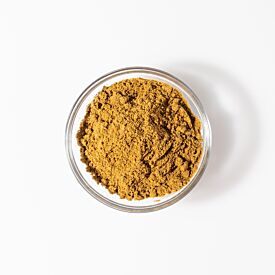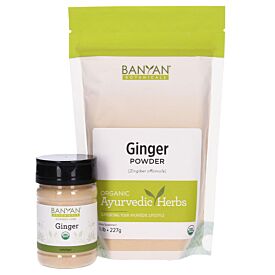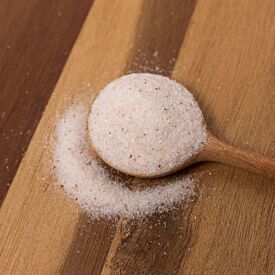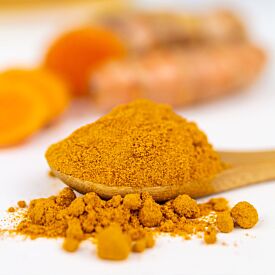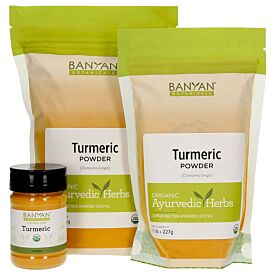An Ayurvedic Exploration of the Many Ways to Prepare Food
So, you want to be an Ayurvedic Jedi? Wherever you are in your Ayurvedic journey, at some point, you may turn towards Ayurvedic cooking to support your well-being. At its simplest, Ayurvedic cooking is about supporting your digestion. At its most complex, it also incorporates the qualities, tastes, compatibilities, and energetics of each ingredient.
It is a mastery of self, of understanding what you truly need as a unique individual. Whichever cooking path you’re on, simple or complex, the potential to be one with the “force” can feel exhilarating. Ayurvedic cooking can infuse vitality into your life and a sense of personal agency.
Why Your Preparation Method Matters
Once you know your constitution and unique combination of doshas (if you don’t know yours yet, take our free dosha quiz to find out), you can begin to understand the foods that are balancing for you based on their qualities and tastes.
For example, if you’re pitta predominant or your kapha is high, fried foods are not supportive for you due to their oily quality that can further increase these doshas. If you’re trying to balance vata, raw salads aren’t always the best choice because of their light, cool qualities.
When you begin to explore an Ayurvedic diet and the endless variety of ways to prepare your meals, you may wonder, do different preparation methods change the qualities and tastes in your food? The short answer is yes.
There are three main methods of cooking that involve heat—moist-heat cooking, dry-heat cooking, and combination cooking, and each of these includes several cooking methods. There are other ways to prepare food as well, such as fermentation and raw meal preparations.
From an Ayurvedic perspective, each of these methods impacts the rasa, or taste, of your food—and therefore affects the doshas.
If you’d like to keep it relatively simple, then just focus on the moist-heat cooking methods. If you’re ready to layer additional insight into your Ayurvedic cooking experience, read on to the other categories as well.
Moist-Heat Cooking Methods
Any time water, liquid, or steam is combined with heat to cook your food, it is considered moist-heat cooking. These methods are generally regarded as sattvic and balancing for all doshas.
In general, Ayurveda views simpler foods as more balancing. Steaming, simmering, and poaching create foods that are easy to digest. This is primarily because there are fewer tastes and qualities to challenge digestion, and plenty of moisture to support healthy digestion.
But don’t worry, having simple flavor does not mean food is boring or without taste!
When cooked properly, the natural flavor of vegetables can truly shine and satisfy.
Here are a few examples of when to use moist-heat cooking methods:
- Steaming: Great for rice, lentils, and vegetables. This is the cooking method, alongside fermentation, that preserves the greatest amount of nutrients.
- Boiling: Best for hard foods like pasta.
- Poaching: Ideal for leaner meats like fish and chicken or more delicate foods like eggs, fruits, and greens.
- Simmering: Commonly used for soups and sauces.
Qualities and tastes: These preparation methods are generally sattvic, balancing for all doshas, and enhance the natural taste and energetics of the food. The qualities are typically moist/wet and light.
Dry-Heat Cooking Methods
Dry-heat preparations refer to cooking techniques that enhance food's flavor by browning or caramelizing it, often using air or fat to create the browning.
Some of these methods can be used initially to develop flavor, and then finished with a moist-heat cooking method. For example, you may sweat your vegetables to develop a sauce that can then be drizzled over steamed vegetables and rice. Or you may sauté rice prior to steaming if you’re making a pilaf or risotto recipe.
- Roasting: Ideal for tougher meats, vegetables, and fruits.
- Grilling: Also great for meats, vegetables, and fruits.
- Sautéing: Generally used for vegetables, and sometimes for grains.
- Sweating: A great way to layer flavor when cooking vegetables. Commonly used for carrots, celery, onions, and garlic.
- Caramelizing: Great for adding sweetness to onions and other vegetables.
- Stir-frying: Often used for vegetables, but can also be used for things like grains, eggs, meats, and tofu.
- Pan-frying: Similar to stir-frying or sautéing but uses a lower heat.
- Searing: Can be used for meats, fish, and vegetables.
- Shallow-frying: Uses hot oil to fry meat, vegetables, and so on.
- Baking: Using an oven to prepare foods with dry heat.
Qualities and tastes: Because these methods typically use air or fat, the oily, light, dry, and mobile qualities can be increased. Caramelizing increases the sweet taste.
Combination Cooking Methods
Cooking methods can be combined when you want to use a method from both categories, such as sautéing rice prior to steaming for a pilaf or baking bones before making bone broth. Combination cooking techniques are typically used when you’d like to gain the benefits of both food preparation styles. This means that the qualities from both methods will be present.
- Braising: A combination of frying and simmering, great for tender meats and hearty greens.
- Stewing: A slow-cooking method, using liquid, often used to cook meats and vegetables.
Fermentation
Fermentation doesn’t require heat to be applied, so it technically is not a cooking method. However, fermentation does change the structure, taste, and qualities of foods. That (and its popularity as a food prep strategy) have earned it a spot on this list.
The process of fermentation, in particular lacto-fermentation, takes advantage of naturally occurring bacteria and begins pre-digesting sugars in the food. It has been shown to increase the bio-availability of nutrients, increase digestibility of proteins, and provide supportive vitamins. 1
Ayurveda recognizes that fermented foods offer health benefits when used wisely and appropriately. For example, while Ayurveda recommends some fermented foods such as lassi and dosa for some, they are not compatible for everyone. These foods provide a great opportunity to practice discernment in choosing the right food for the right person in the right quantity.
Fermentation primarily increases the sour taste and has the potential to increase salty and pungent tastes depending on the preparation and ingredients used. These three tastes, salty, sour, and pungent, are a potent trifecta that works to stimulate agni. That being said, fermented foods are best consumed in moderation for pitta types and, in some cases, for kapha types.
Raw Food Preparation
Traditionally in Ayurveda, raw foods are not recommended, as they increase the qualities of light, rough, and cold—all of which can extinguish and deplete your digestive fire. However, there is some misconception about the raw food trend. Eating raw is primarily the consumption of natural foods—but it also uses soaking, sprouting, and low-heat cooking methods.
Raw food can still be heated at low temperatures (104–118 degrees Fahrenheit). 2 The intention is to conserve the prana, or life force, within the food. This is often done in a dehydrator or by using a blender to slowly and gently heat the food.
Even so, it’s best to consume raw or raw-prepared foods minimally, and only when your agni is strong. Otherwise, the qualities in raw food can increase vata dosha within the body. To prevent this, you can utilize digestive spices like ginger, cumin, salt, turmeric, and pepper to add the qualities and tastes that bring balance to the meal.
Next Steps
Generally, most Ayurvedic recipes will involve moist-heat cooking methods as they are considered the most sattvic, balancing, and tridoshic. That said, try experimenting with all cooking methods that call to you, then observe how you feel in your body. This will be the greatest indicator of what works best for you.
Play with the ratio and proportion of foods cooked with different methods. For example, try steamed rice with sautéed nuts and vegetables for vata. Or poached bok choy with steamed quinoa and lentils with some lacto-fermented carrots on top for kapha.
As you continue developing your Ayurvedic Jedi skills in the kitchen, you will feel connected to the “force,” which is just another way to say your intuition and your body’s innate wisdom.






